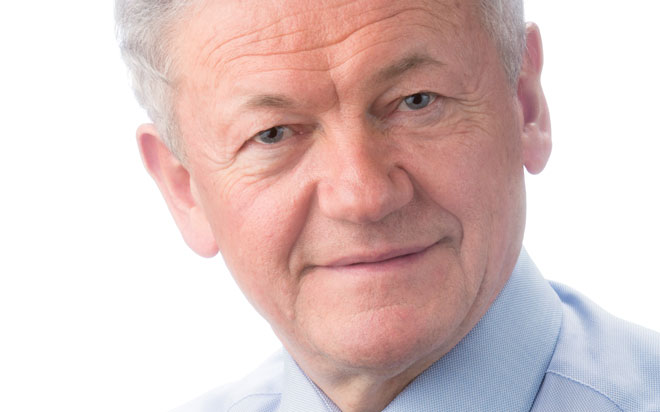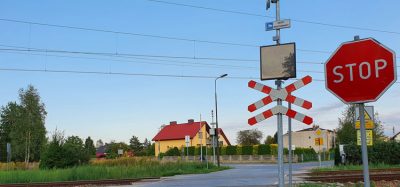Railway safety, it’s my priority…
Posted: 25 May 2016 | | No comments yet
Belgium, situated at the heart of the European Union, possessing a very developed economic sector of logistics, is abundantly conscious of the challenges – present and future – of the transport sector. We are often pointed at as Belgium still resides in the top ranks of most congested roads in Europe. The transport sector has to continuously reinvent and adapt itself to become effective and efficient in accommodating ad-hoc demands. For instance, the transport sector still has a long way to go to reduce its ecological footprint…


However, rail transport is a sustainable transport mode that contributes to economic growth and competitiveness, yet it is not without its flaws. Its intra-communal territorial fragmentation de facto limits interoperability and hinders the development of the single European railway area. This is why one of the objectives of the Fourth Railway Package is to eliminate these obstacles which impede the creation of the single European railway area. In so doing, it will contribute to a more competitive railway sector.
Today more than 20 different signalling systems coexist in Europe and this is not without consequence. This incompatibility constitutes a major technical obstacle for international traffic and goods transport. While railway transport should be more competitive over long-distances, every border adds overhead costs and delays, which translate in loss of market share and saturation of the road network.
ERTMS has imposed itself naturally as the best adapted technical solution. Thanks to this ingenious system, we will be able to significantly increase the competitiveness of railway transportation. This is particularly true in the case of freight.
ERTMS is a big industrial success for Europe and has become the global reference system! ERTMS goes hand-in-hand with safety and interoperability.
The Belgian railway sector, at the centre of the European railway sector, is engaged in an important transformation. The challenge to which Belgium must rise – as with most other European countries – is to succeed in a transition from the national signalling system to ERTMS without jeopardising the safety, capacity and continuity of its railway systems.
It heartens me that Belgium is one of the countries most progressed in the deployment of ETCS on its railway network. Safety, it’s my priority.
Unfortunately, I was forced to conclude at the end of 2015 that many of the locomotives of operators running on those lines still haven’t been equipped with ETCS. The homologation of ETCS (on the rolling stock), followed by the roll-out on all concerned locomotives during 2016, is indispensable to increase the safety of railway operations in our country.
The involvement of all stakeholders – infrastructure managers, railway operators, national and European authorities, as well as industry – is the condition sine qua non to make sure the migration of the European railway system to ERTMS will be carried out in a coordinated way and unambiguously.
This system would lose a lot of its benefits if it should be deployed in isolation by one single country. To allow trains to circulate on the entire Belgian and European network, we all have to work in concert, without exception. It cannot be over stated that the deployment of ERTMS on the railway network will lower functioning costs and will substantially increase effectiveness on long cross border routes!
I’m particularly proud that Belgium, with the aid of the European Commission and the Innovation and Networks Executive Agency (INEA), has been able to complete the section between Antwerp and Luxembourg fully in line with the European deployment plan.
After the dramatic railway accident in Buizingen in 2010, Belgium has really caught up in terms of safety in respect to its neighbouring networks. But the work is not yet finished. The effort has to continue.
I want to underline the fact under the horizon 2022 policies and conforming to the masterplan, Belgium will have equipped the whole of its railway network with ERTMS. This will mean an increase in safety, reliability and capacity for the national network.
By doing so, we contribute to constructing the architecture of a performant trans-European network that will allow the establishment of a single European railway area.
OUT NOW: The Definitive Guide to Rail’s Digital Future
The rail industry is undergoing a digital revolution, and you need to be ready. We have released our latest market report, “Track Insight: Digitalisation.”
This is not just another report; it’s your comprehensive guide to understanding and leveraging the profound technological shifts reshaping our industry. We move beyond the buzzwords to show you the tangible realities of AI, IoT, and advanced data analytics in rail.
Discover how to:
- Optimise operations and maintenance with real-time insights.
- Enhance passenger services through seamless, high-speed connectivity.
- Leverage technologies like LEO satellites to improve safety and efficiency.
Featuring expert analysis from leaders at Nomad Digital, Lucchini RS, Bentley Systems and more, this is a must-read for any rail professional.







